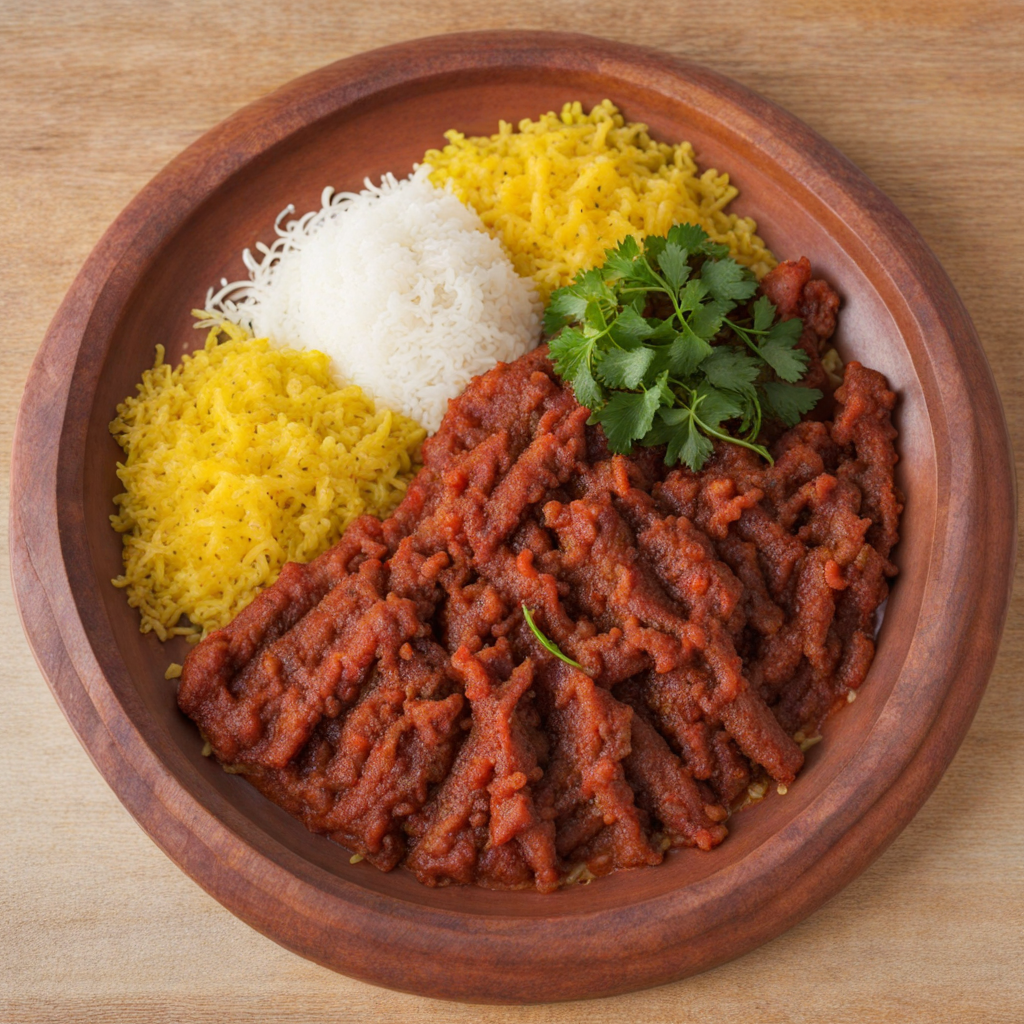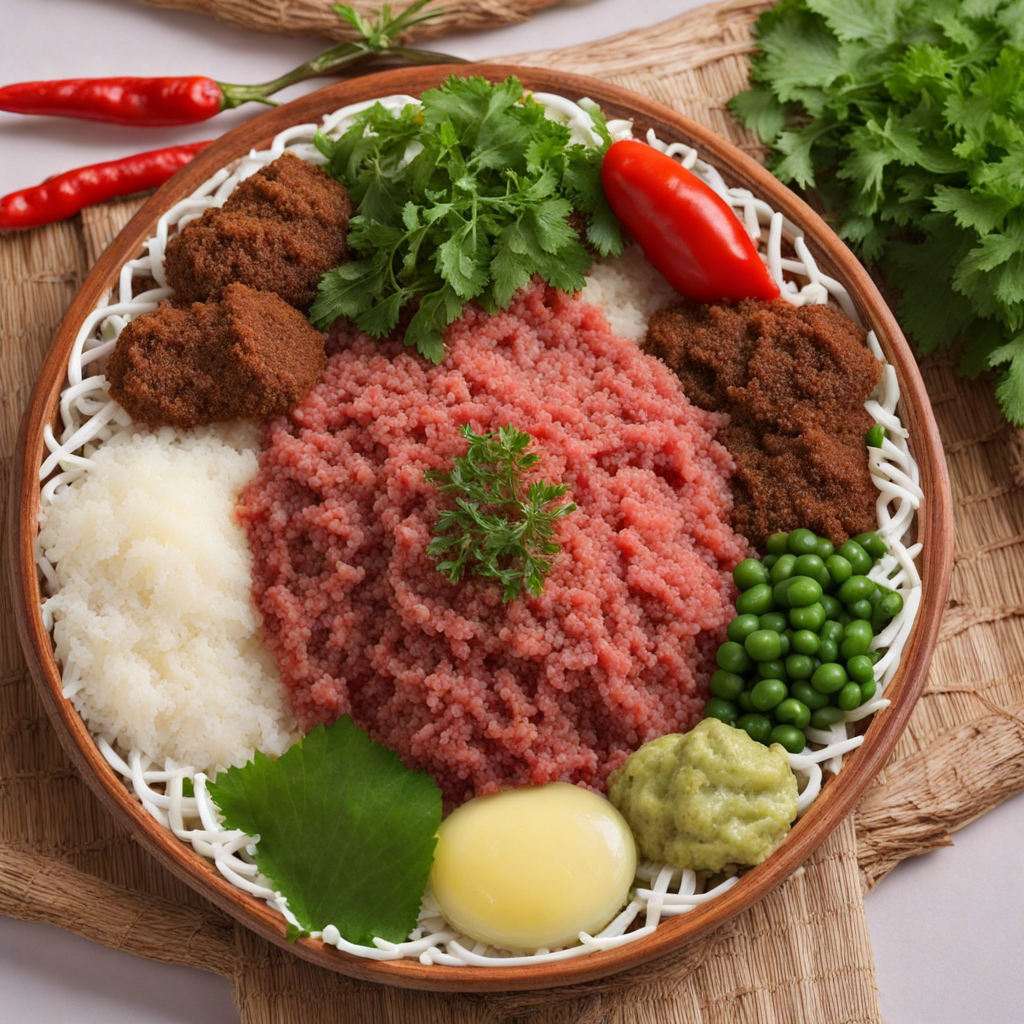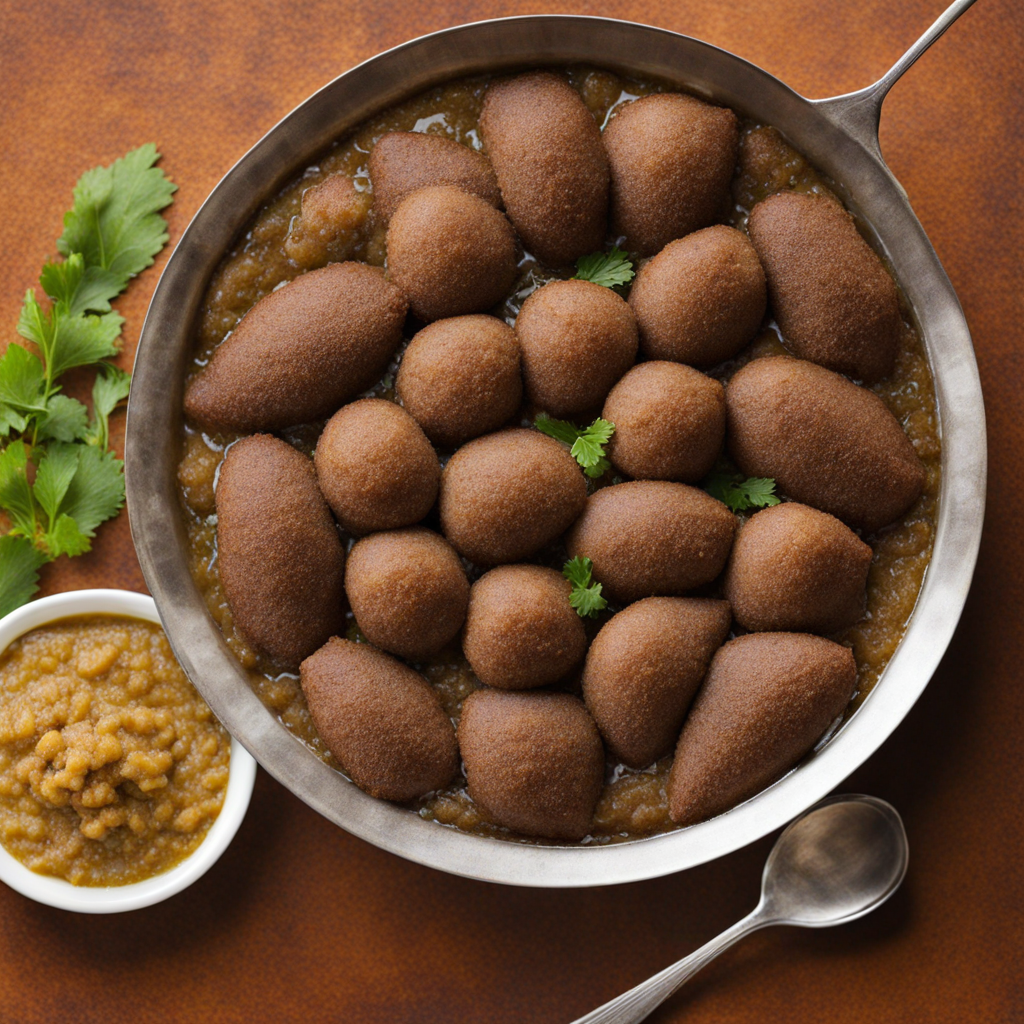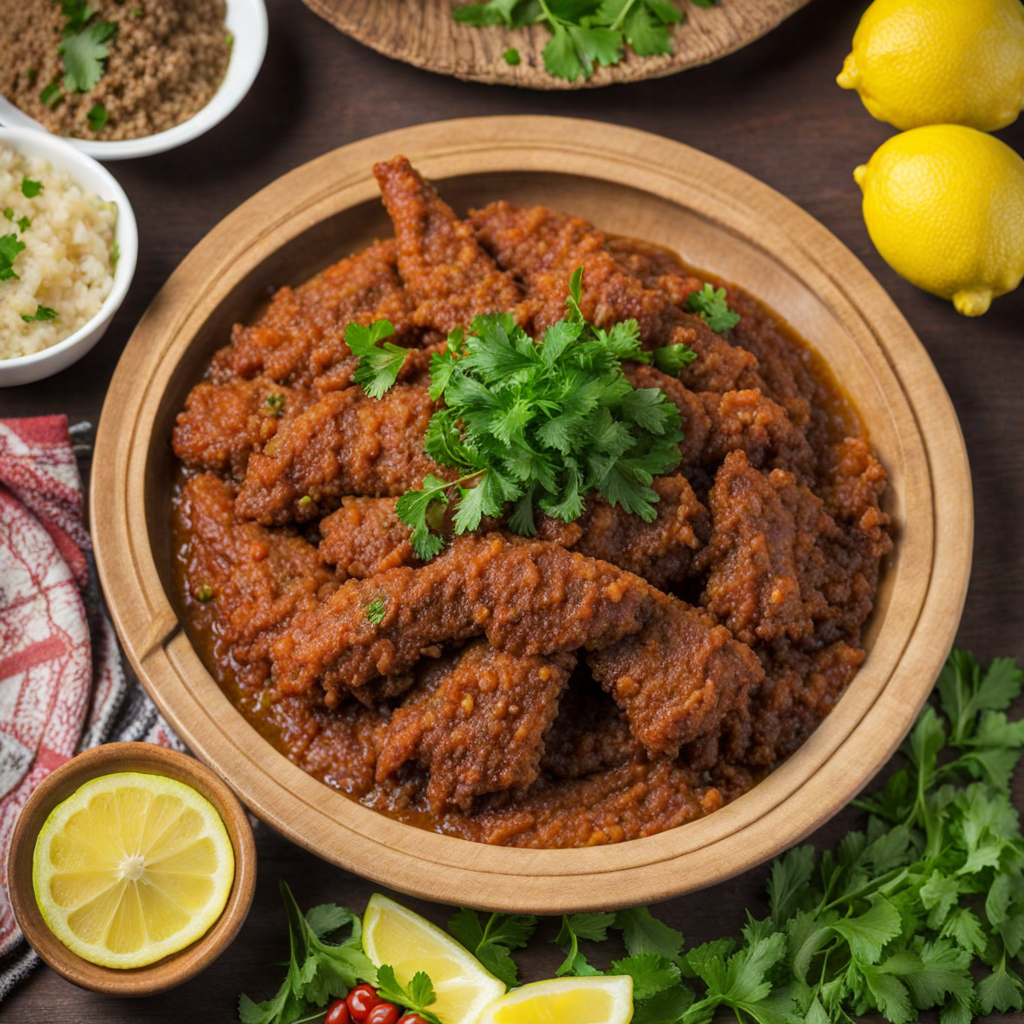Tere Siga
Tere Siga is a traditional Ethiopian dish that tantalizes the taste buds with its unique blend of flavors and textures. This dish features raw beef that is typically seasoned with a mix of spices including mitmita, a fiery chili powder, and a hint of salt. The beef is often served with a side of fresh vegetables, such as sliced tomatoes and onions, which add a refreshing crunch and balance the richness of the meat. The presentation is vibrant and colorful, inviting diners to indulge in this authentic culinary experience. One of the highlights of Tere Siga is its cultural significance in Ethiopian cuisine. It is often enjoyed during special occasions and gatherings, where it is shared among friends and family, symbolizing camaraderie and hospitality. The dish is usually accompanied by injera, a traditional sourdough flatbread that serves as the perfect vessel for scooping up the raw meat and vegetables. The spongy texture of injera complements the dish beautifully, allowing the flavors to meld together in every bite. For those adventurous enough to try Tere Siga, the experience is both exhilarating and memorable. The tender raw beef, seasoned just right, packs a punch of flavor that is unlike any other dish. It invites a sensory exploration, as the heat from the spices mingles with the freshness of the accompaniments. Whether enjoyed in a bustling restaurant or at a family gathering, Tere Siga represents a bold and authentic taste of Ethiopia that promises to leave a lasting impression on any palate.
How It Became This Dish
The History of ጥሬ ስጋ (Tiro Sigga) in Ethiopian Cuisine #### Origins Tiro Sigga, or ጥሬ ስጋ in Amharic, is a traditional Ethiopian dish that consists of raw minced beef, often seasoned with spices and served with a variety of accompaniments. This dish is the Ethiopian equivalent of steak tartare, reflecting the country's rich culinary history and cultural heritage. The origins of Tiro Sigga can be traced back to the pastoralist communities of the Ethiopian highlands who raised cattle for both sustenance and trade. Ethiopia's unique geography, with its highlands, valleys, and diverse climates, has allowed for a variety of livestock, particularly cattle, to thrive. The tradition of consuming raw meat is believed to have emerged from the necessity of utilizing every part of the animal, minimizing waste, and maximizing nutrition. This practice is especially important in cultures where meat is a luxury. The preparation of Tiro Sigga thus reflects a deep-seated respect for the animal and the resources it provides. #### Cultural Significance Tiro Sigga is not merely a dish; it occupies a significant place in Ethiopian culture. It is often served during special occasions, celebrations, and communal gatherings, embodying the spirit of hospitality that is deeply ingrained in Ethiopian society. Sharing a plate of Tiro Sigga is a communal activity, drawing friends and family together, reinforcing social bonds, and allowing for the exchange of stories and laughter. The dish is often accompanied by fresh injera, a traditional sourdough flatbread, and a variety of sides such as spicy lentils, salads, and vegetables, creating a balanced meal that highlights the Ethiopian philosophy of sharing. In Ethiopian Orthodox Christian culture, where fasting involves abstaining from meat, Tiro Sigga emerges as a dish of indulgence to be enjoyed during feasts and holidays. It is particularly popular during Timkat (Epiphany) and Meskel (Finding of the True Cross), when communities come together to celebrate with a feast. Tiro Sigga also plays a role in the unique ritual of the Ethiopian coffee ceremony, where it is sometimes presented alongside the coffee served to guests, further enhancing the experience of hospitality. #### Preparation and Ingredients The preparation of Tiro Sigga is an art form in itself, requiring skill and attention to detail. Traditionally, the beef used for Tiro Sigga is sourced from young cattle, which are preferred for their tenderness. The meat is then meticulously chopped into fine pieces or minced, often by hand, to achieve the desired texture. The freshness of the meat is paramount, as raw dishes depend heavily on quality and purity. Seasoning is critical in Tiro Sigga. The meat is often mixed with a blend of spices known as berbere, which includes chili peppers, garlic, ginger, and various other spices, providing a complex flavor profile. Some variations may also incorporate mitmita, a powdered spice blend that adds a fiery kick, or a drizzle of high-quality Ethiopian olive oil. Tiro Sigga can be garnished with finely chopped onions, green peppers, and sometimes even a raw egg yolk, offering richness and depth to the dish. The accompaniment of injera is essential, as it serves as both a base and a utensil for scooping up the Tiro Sigga. The sourdough flavor of the injera complements the richness of the meat, balancing the meal and enhancing the overall experience. #### Development Over Time Throughout history, the consumption of raw meat has evolved in Ethiopia, influenced by various factors including geography, trade, and social customs. The dish has a long-standing presence in Ethiopian cuisine, but it has gained visibility and appreciation beyond its borders in recent years. The globalization of food culture, particularly in urban areas and among the diaspora, has led to a renewed interest in traditional Ethiopian dishes, including Tiro Sigga. In recent decades, the dish has been featured in various Ethiopian restaurants worldwide, where it is often presented as a highlight of Ethiopian culinary offerings. This international exposure has led to adaptations in preparation methods and serving styles to accommodate diverse palates. In some instances, chefs have experimented with incorporating non-traditional ingredients or fusion techniques, while still maintaining the essence of Tiro Sigga. Moreover, the rise of food safety awareness and culinary regulations has prompted discussions around the consumption of raw meat. In Ethiopia, where the preparation methods are deeply rooted in tradition and cultural practice, there is a strong emphasis on sourcing fresh meat from trusted suppliers. As awareness around foodborne illnesses grows globally, Ethiopian chefs are increasingly adopting practices that prioritize hygiene while preserving the authenticity of the dish. #### Contemporary Relevance Today, Tiro Sigga stands as a symbol of Ethiopian identity, pride, and culinary heritage. It is a reflection of the country’s agricultural practices, cultural celebrations, and social interactions. The dish has transcended its humble origins to become an emblem of Ethiopian cuisine, celebrated for its bold flavors and communal nature. The resurgence of interest in traditional foods, particularly those that emphasize locality and authenticity, has contributed to Tiro Sigga's popularity. As more people seek to understand diverse culinary traditions, Tiro Sigga serves as an entry point into the rich tapestry of Ethiopian food culture. Food enthusiasts and home cooks alike are experimenting with the dish, learning about its history, and appreciating its significance within the broader context of Ethiopian culture. In conclusion, Tiro Sigga is not just a dish; it is a narrative of Ethiopia's pastoral heritage, communal values, and culinary artistry. Its journey from the highlands of Ethiopia to dining tables around the world encapsulates the essence of a culture that celebrates life, community, and the joy of sharing food. As Ethiopia continues to gain recognition on the global culinary stage, Tiro Sigga remains a poignant reminder of the power of food to connect people, tell stories, and foster a sense of belonging.
You may like
Discover local flavors from Ethiopia







